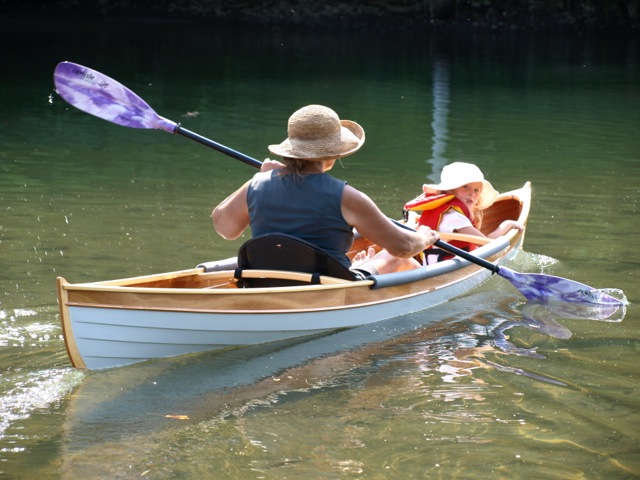 Lorenz Rutz
Lorenz RutzShari Rutz and her granddaughter take a maiden voyage on the Ompompanoosuc River near Norwich, Vermont.
A bit of keeping up with the Joneses led Lorenz Rutz to build PEARL, a 12′ Wee Rob canoe designed by Iain Oughtred. His wife Shari enjoyed kayaking but struggled with her 60-lb plastic kayak. Lorenz would help her load the boat on their truck’s canopy roof rack, but she would return with it slid in on the truck bed. Shari paddles with a petite woman who arrived at one of their outings with a new 30-lb composite kayak. When Lorenz heard about that, “the gauntlet was down” and he started looking for a winter project: a small paddle craft that was “light, small, and classy.”
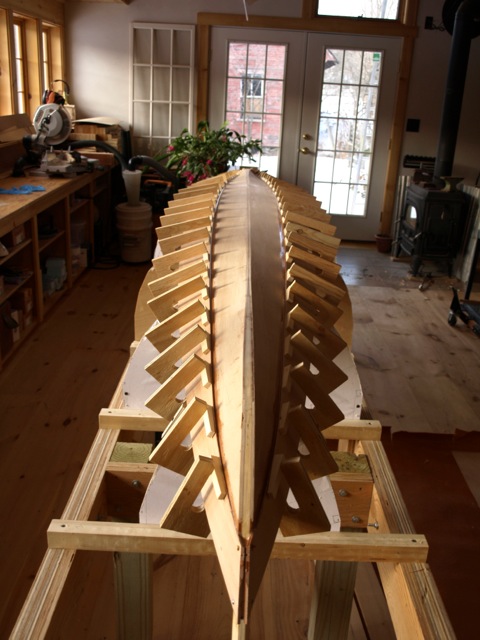 Lorenz Rutz
Lorenz RutzThe second strake goes on with the aid of dozens of fixed plywood clamps and wedges.
With light weight a priority, Lorenz found himself looking at undecked double-paddle canoes. In Oughtred’s Clinker Plywood Boatbuilding Manual he found listed among the designs the Wee Rob, a double-paddle canoe in the tradition of John MacGregor’s Rob Roy canoes. The Wee Robs he saw pictured on the web appealed to him and he ordered plans from The WoodenBoat Store.
The Wee Rob requires only two sheets of 4mm marine plywood and a few bits of lumber. Lorenz, on good terms with the folks at his local lumberyard, was allowed to sift through stacks of SPF (spruce-pine-fir) dimensional stock. Much of this grade of lumber is Canadian-grown spruce, and there are occasionally pieces with close, straight grain and nearly free of knots. “For the cost—cheap—I could well afford to rip out the best bits and save the knotty stuff for other uses.”
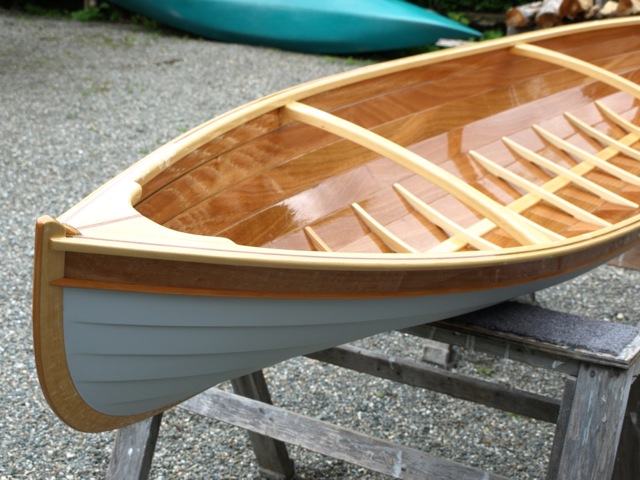 Lorenz Rutz
Lorenz RutzSpruce structural members keep the canoe’s weight to a minimum.
The plans include a set of full-sized templates for the molds and stems, so Lorenz could skip lofting. He found Oughtred’s book a valuable companion to the instructions included with the plans. To assure that he didn’t make mistakes on the good plywood, he used cheap 3mm plywood to create patterns for the planks. At the finishing stage of construction, all of the wood was sealed with a coat of epoxy prior to varnish and paint.
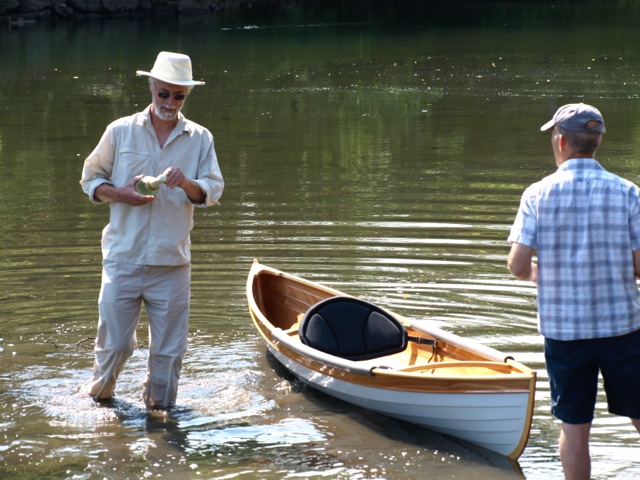 Charlotte Rutz
Charlotte RutzThe Wee Rob plans include a decked version but Lorenz (left) was looking for a light pond boat, and decking would have added significant weight, so he built PEARL as an open boat.
 Lorenz Rutz
Lorenz RutzA bit of custom outfitting—footbraces and a padded backrest—give the canoe a kayak-like fit and feel. Foam pipe insulation protects the varnished gunwales and offers comfortable arm rests.
PEARL was launched last summer on a beaver pond near the Rutzes’ home in Strafford, Vermont. As kayakers, they found the absence of decks took some getting used to. To get a more secure and familiar fit, Lorenz added foot braces, a molded seat, and a broad, padded backrest. “Once these were in place the boat felt much better to us.” While they’ll continue to use their kayaks for exposed waterways, the canoe is well suited to tranquil exploration of the many ponds nearby. At 30 lbs it is much easier for Shari to manage by herself, and she reports that PEARL turns heads wherever she takes to the water.![]()
Have you recently launched a boat? Please email us. We’d like to hear about it and share it with other Small Boats Monthly readers.
Addendum: Lorenz provided us with some photographs of his well appointed shop. In response to the comment below by reader Mark Steffens, two photographs are posted here.
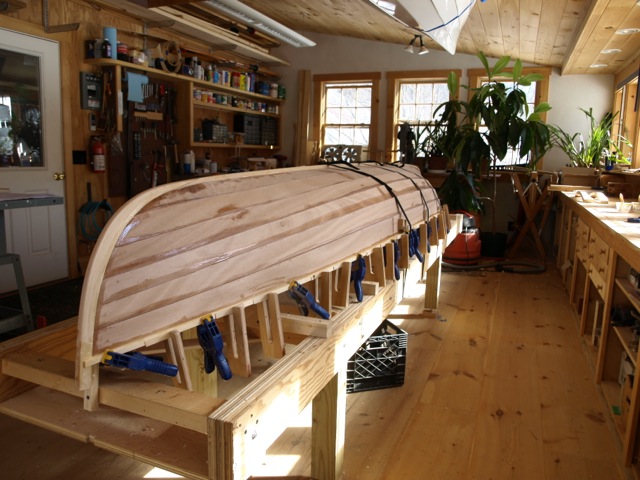
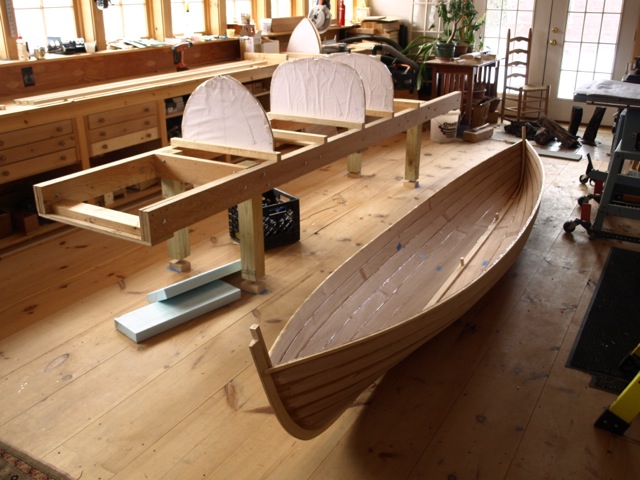
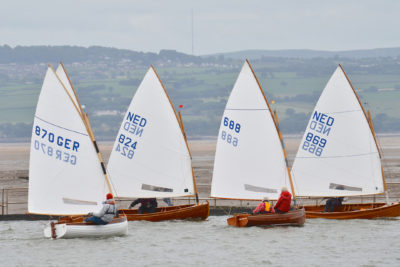
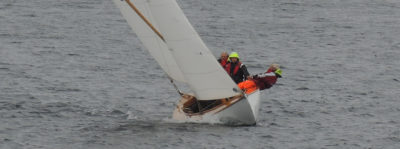
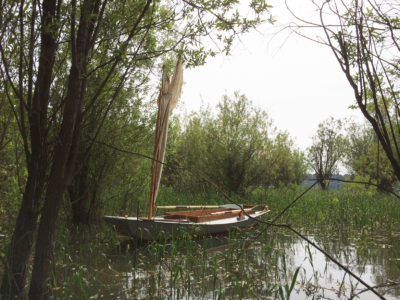

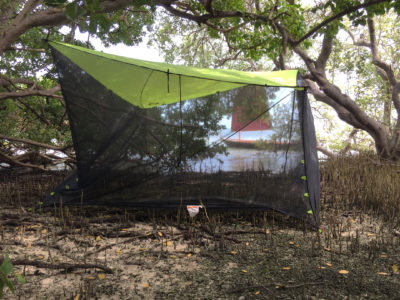
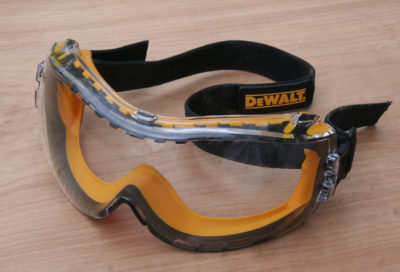
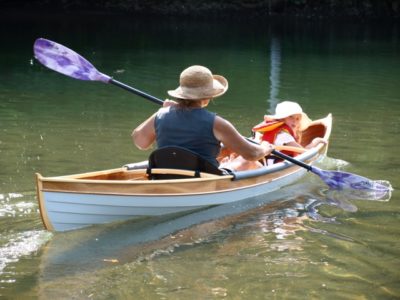
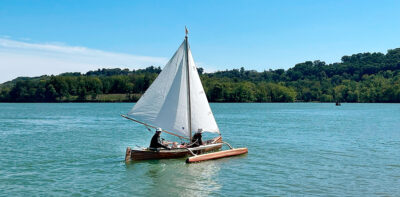
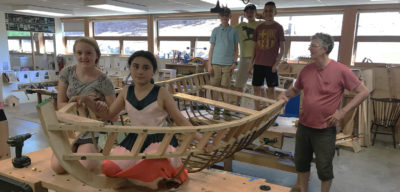
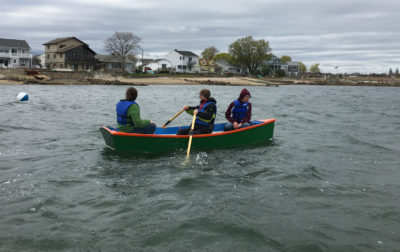
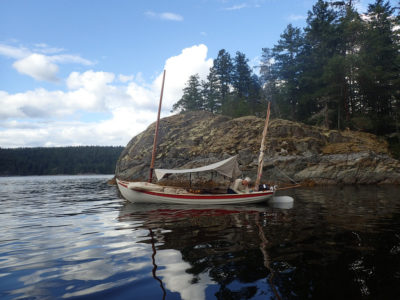
Beautiful boat. I would love to see pictures of your boatshop. That also looks well thought out and a great tool for woodworking.
Thanks for your request, Mark. I’ve added two photos from Lorenz. You raise a good point about a shop being a tool. Mine, I’m afraid, is in desperate need of sharpening.
Christopher Cunningham, Editor, Small Boats Monthly
I noticed that too! What a lovely woodshop.
I appreciated this article. This is a boat I have wanted to build for some time and for the same use that Lorenz and Shari had in mind: Newfoundland has so many ponds just begging to be paddled on a summer’s day. Many are not easily accessible, so light weight is a real advantage.
I have almost finished a new shop at my home in Flatrock and, after maintenance to my rodney boat and skiff before summer, I hope the Wee Rob to be my first project in the new building.